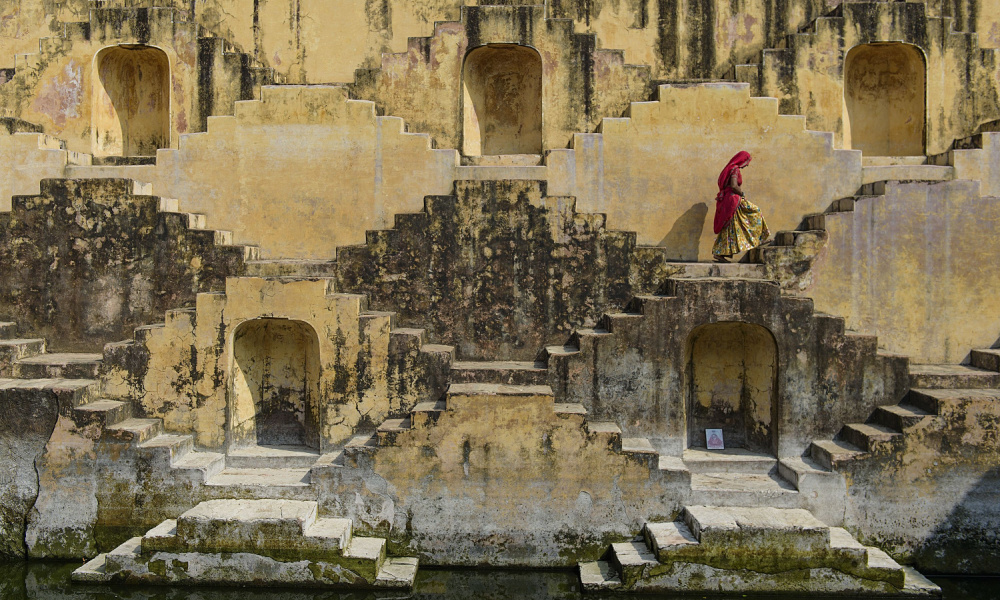India is literally filled with awesome photo opportunities for the Insta-obsessed adventurer. Even outside the most common and traveled touristic spots, it’s not difficult to be amazed amid the gorgeous beauty that the subcontinent has to offer throughout its bustling cities, lush jungles, and endless roads. Here, even a water well can be a breathtaking place for everybody to see. Although, to be fair, we’re not talking about your regular water storage deposit, but rather a magnificent architectural marvel from medieval times.

Located in Abhaneri, Rajasthan, Chand Baori is surrounded by an exquisitely intricate, almost four-sided stepwell pattern with hundreds of stone steps and fascinating carvings across the whole structure. It’s said that the stepwell — dated between the 8th and 9th centuries — was named after a local ruler named Raja Chanda. Today, Chand Baori is considered one of the oldest — and the deepest — surviving stairways in the country.
But why stairs, you may ask? “Well” (see what wee did there?), in ancient times these watering spots were not only used for fetching water, but also served as gathering places for local communities. Stepwells like Chand Baori acted like designated destinations to socialize, and its vestiges are a proud testament of the rich history of culture of Rajasthan and the peoples that inhabited the region a lifetime ago.
As it happens, these impressive structures were gradually abandoned during the years of the British occupation, mainly because of evident health concerns regarding a communal space that was widely used as a both a drinking and a bathing spot. Chand Baori and the rest of stepwells were outlawed, making way for the modern pumps and pipes widely used nowadays. Not surprisingly, Chand Baori is still a quite popular tourist destination from those visiting India — and a perfect 1-day getaway from Jaipur — and a frequent spot for filming movies.




Leave a Reply